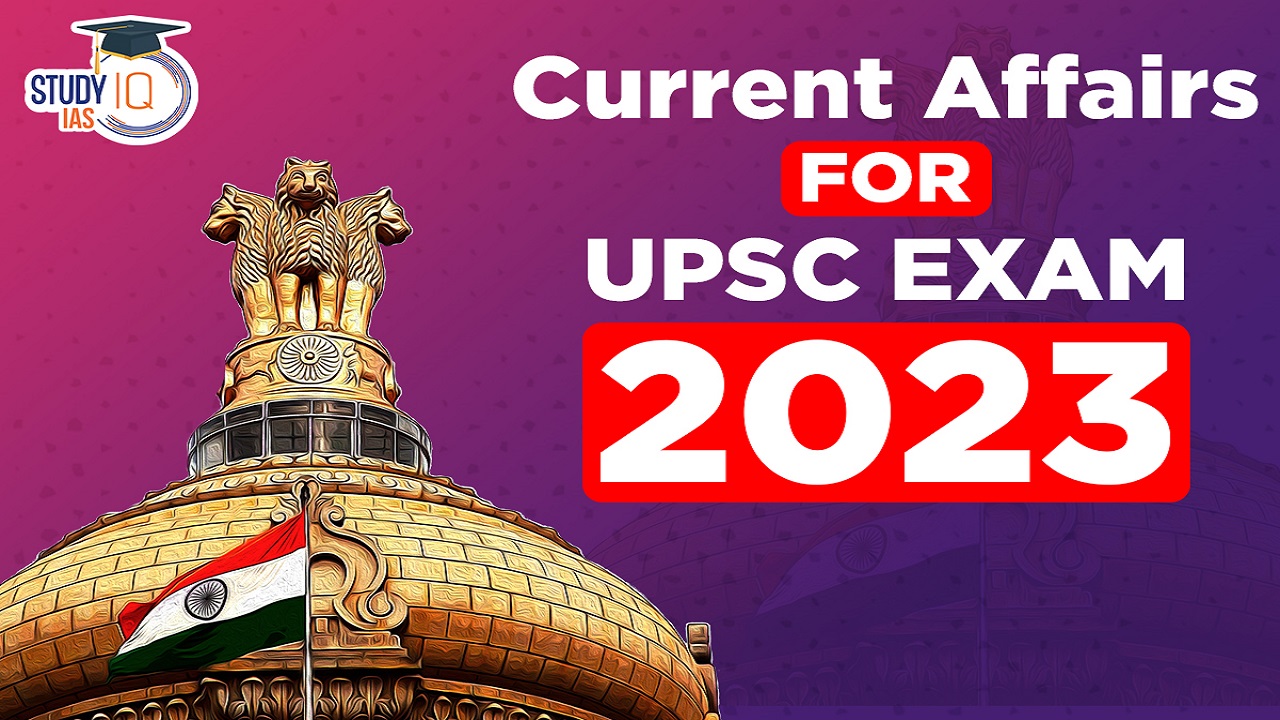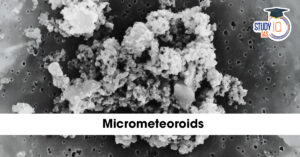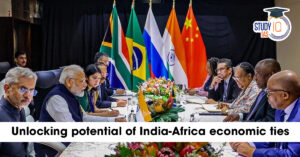Current Affairs 21st June 2023 for UPSC Prelims Exam
Competition Commission of India (CCI)
Context: The Supreme Court has been hearing Coal India Ltd’s appeal against the Competition Commission of India which had imposed a penalty of ₹591 crore on it.
Background
- In 2017, the Competition Commission of India (CCI) had imposed a penalty of ₹591.01 crore on CIL for imposing unfair conditions in fuel supply agreements (FSAs) with the power producers for supply of non-coking coal.
- CIL was found to be supplying lower quality of the essential resource at higher prices and placing opaque conditions in the contract about supply parameters and quality.
- Coal India argued that it operated with the principles of ‘common good’ and ensuring equitable distribution of the essential natural resource.
- With this objective, it was secured as a ‘monopoly’ under the Nationalisation Act, 1973 (more specifically, the Coal Mines (Nationalisation) Act, 1973).
- According to CCI, coal constitutes about 60 to 70% of the costs for power generation companies. Thus, irregular prices and supply will have a significant bearing indirectly on consumers.
- The SC recently said that there was “no merit” in the argument that the Competition Act would not apply to CIL because they are governed by the Nationalisation Act, and it cannot be reconciled with the Competition Act.
- This judgment reinforced the principle of “competitive neutrality” entailing that the Competition Act equally applies to public and private sector enterprises.
About Competition Commission of India
- Definition: The Competition Commission of India (CCI) is a statutory body.
- It was established in 2009 by Government of India under the Competition Act, 2002 for the administration, implementation, and enforcement of the Act.
- It should be noted that on the recommendations of Raghavan committee, the Monopolies and Restrictive Trade Practices Act, 1969 (MRTP Act) was repealed and replaced by the Competition Act, 2002.
- CCI is a quasi-judicial body.
- It was established in 2009 by Government of India under the Competition Act, 2002 for the administration, implementation, and enforcement of the Act.
- Objectives:
- Eliminate practices having adverse effect on competition
- Promote and sustain competition
- Protect the interests of consumers
- Ensure freedom of trade in the markets of India
- Proactive engagement with all stakeholders, including consumers, industry, government and international jurisdictions
- Being a knowledge intensive organization with high competence level
- Professionalism, transparency, resolve and wisdom in enforcement.
- Composition: CCI consists of a Chairperson and 6 Members appointed by the Central Government.
- Significance: CCI has adjudicated more than 1,200 antitrust cases that were highly complex, traversed till the apex court and stood the judicial scrutiny, and in the process, developed world-class jurisprudence.
- It has also reviewed more than 900 mergers and acquisitions till date, cleared most of them, within a record average time of 30 days.
- CCI has also come up with several innovations like the ‘green channel’ provision for automated approval on combinations and cleared more than 50 of such transactions.
- CCI has conducted several market studies helping dynamics of market.
- CCI has slapped hefty fines on tech giant Google, and hospitality firms like OYO and MakeMyTrip.
- Challenges:
- Toothless Regulator: CCI has been called a ‘Toothless regulator’ by critics as most of the orders of the CCI are under appeal before the National Company Law Appellate Tribunal (NCLAT) or under challenge in the high courts or the Supreme Court.
- Cartelization: The Union Government is pushing infrastructure growth to scale up demand, hence there is a possibility of threat from cartelisation.
- Input costs are rising despite India having a huge capacity to cater to both domestic and export demands.
- There is a global shortage of commodities due to the pandemic and war in Eastern Europe, hence, the supply chain has been adversely affected.
- There is a need to ensure that there are no monopolistic/duopolistic tendencies leading to price rise and supply side manipulations.
- Regulatory Overlap: In spheres such as telecom, internet and big-technology, CCI’s functions also overlap with other regulatory bodies such as the Telecom Regulatory Authority of India (TRAI).
- Lack of Technical Staff: CCI will require staff with specialized knowledge in technology as well as an understanding of modern industrial economics.
- Lack of Digitization: There is lack of new market definition for digital technologies.
- With the advent of Web 3.0, AI, IoT, Blockchain and other technological developments, and emergence of issues like data protection and privacy, search bias, platform neutrality, deep discounting, hostile takeovers, confidentiality, etc, the need for a robust competition law, geared to meet the needs of present day techno-legal world becomes vital.
What is the Competition Act?
- The Competition Act, 2002, as amended by the Competition (Amendment) Act, 2007, follows the philosophy of modern competition laws.
- The Act prohibits anti-competitive agreements, and abuse of dominant position by enterprises and regulates combinations (acquisition, acquiring of control and M&A), which causes or likely to cause an appreciable adverse effect on competition within India.
- In accordance with the provisions of the Amendment Act, the Competition Commission of India and the Competition Appellate Tribunal have been established.
- The government of India replaced Competition Appellate Tribunal (COMPAT) with the National Company Law Appellate Tribunal (NCLAT) in 2017.
- The provisions of the Competition Act relating to anti-competitive agreements and abuse of dominant position were notified on May 20, 2009.
Current Affairs 20th June 2023 for UPSC Prelims Exam
UNSC 1267 Committee
Context: China has blocked the proposal moved by the U.S. and India to blacklist terrorist Sajid Mir under the 1267 Al Qaeda Sanctions Committee of the UN Security Council as a global terrorist.
About UN Security Council 1267 Committee
- Definition: It was first set up in 1999 (updated in 2011 and 2015), and strengthened after the September 2001 attacks.
- It is now known as the Da’esh and Al Qaeda Sanctions Committee.
- The 1267 list of terrorists is a global list, with a UNSC stamp.
- Objective: It is one of the most important and active UN subsidiary bodies working on efforts to combat terrorism, particularly in relation to Al Qaeda and the Islamic State group.
- It discusses UN efforts to limit the movement of terrorists, especially those related to travel bans, the freezing of assets and arms embargoes for terrorism.
- Composition: It comprises all permanent and non-permanent members of the United Nations Security Council (UNSC).
- Permanent Members of UNSC: China, France, Russian Federation, the United Kingdom, and the United States.
- Working: Any member state can submit a proposal for listing an individual, group, or entity.
- Decisions on listing and delisting are adopted by consensus.
- The proposal is sent to all the members, and if no member objects within five working days, the proposal is adopted. An “objection” means curtains for the proposal.
- Any member of the Committee may also put a “technical hold” on the proposal and ask for more information from the proposing member state. During this time, other members may also place their own holds.
- The matter remains on the “pending” list of the Committee until such time as the member state that has placed the hold decides to turn its decision into an “objection”, or until all those who have placed holds remove them within a timeframe laid down by the Committee.
- Pending issues must be resolved in six months, but the member state that has placed the hold may ask for an additional three months. At the end of this period, if an objection is not placed, the matter is considered approved.
Vaccines and its Types
Context: India’s first indigenous mRNA vaccine for the Omicron variant, GEMCOVAC-OM, has been approved by the Drug Controller General of India.
About GEMCOVAC-OM Vaccine
- Definition: Gemcovac Om is the first booster mRNA Covid-19 vaccine developed in India against the highly transmissible Omicron variant.
- Technology: The vaccine has been developed using Gennova’s indigenous platform technology, supported under ‘Mission Covid Suraksha’.
- Developed by: A Pune-based company: Gennova Biopharmaceuticals Ltd.
- Features: The vaccine is a lyophilised (freeze dried) vaccine, stable at two to eight degrees Centigrade.
- It can be stored in ordinary refrigerators.
- The vaccines could be administered into the skin via a “needle-free” PharmaJet system.
- PharmaJet system are spring-powered injectors deliver vaccine or therapeutic by means of a narrow stream of fluid that penetrates the skin in about 1/10 of a second.
- Significance: The currently approved vaccines used as precautionary or booster doses are designed against the ancestral strain of SARS-CoV-2.
- Developing antibodies and memory immune responses specific to the Omicron variant will reduce the probability of infection and hospitalisation, and prevent future waves of the pandemic. The made-in-India ‘Gemcovac Om’ specifically addresses this gap.
- GENCOVAC-OM has a greater safety profile than Covishield and generates more neutralising antibodies.
- Neutralising antibodies are the specific class of antibodies that prevent the coronavirus from proliferating within the body.
What is mRNA Vaccine Technology?
- Vaccine: Vaccines help prevent infection by preparing the body to fight foreign invaders (such as bacteria, viruses, or other pathogens).
- All vaccines introduce into the body a harmless piece of a particular bacteria or virus, triggering an immune response.
- Most vaccines contain a weakened or dead bacteria or virus.
- mRNA Vaccine: Scientists have developed a new type of vaccine that uses a molecule called messenger RNA (mRNA) rather than part of an actual bacteria or virus.
- Messenger RNA is a type of RNA that is necessary for protein production.
- Once cells finish making a protein, they quickly break down the mRNA.
- mRNA from vaccines does not enter the nucleus and does not alter DNA.
- Working of mRNA: mRNA vaccines work by introducing a piece of mRNA that corresponds to a viral protein, usually a small piece of a protein found on the virus’s outer membrane.
- By using this mRNA, cells can produce the viral protein.
- As part of a normal immune response, the immune system recognizes that the protein is foreign and produces specialized proteins called antibodies.
- Antibodies help protect the body against infection by recognizing individual viruses or other pathogens, attaching to them, and marking the pathogens for destruction.
- Once produced, antibodies remain in the body, even after the body has rid itself of the pathogen, so that the immune system can quickly respond if exposed again.
- If a person is exposed to a virus after receiving mRNA vaccination for it, antibodies can quickly recognize it, attach to it, and mark it for destruction before it can cause serious illness.
- Importance: mRNA vaccines represent a promising alternative to conventional vaccine approaches because of their high potency, and capacity for rapid development.
- These vaccines have potential for low-cost manufacture and safe administration.
- Unlike conventional vaccines, which can take months to produce, mRNA vaccines can be created quickly and are more easily scaled because they are based on an organism’s genetic code.
- mRNA vaccine can be rapidly developed against newly emergent pathogens, such as emerging influenza virus strains, Zika virus, and most recently SARS-CoV-2.
What are Other Types of Vaccines?
- Inactivated Vaccines: These vaccines use the killed version of the germ that causes a disease.
- They usually don’t provide immunity (protection) that’s as strong as live vaccines.
- Inactivated vaccines are used to protect against:
- Hepatitis A
- Flu (shot only)
- Polio (shot only)
- Rabies
- Live-attenuated Vaccines: Live vaccines use a weakened (or attenuated) form of the germ that causes a disease.
- These vaccines are so similar to the natural infection that they help prevent hence they create a strong and long-lasting immune response.
- Just 1 or 2 doses of most live vaccines can give a lifetime of protection against a germ and the disease it causes.
- The limitation of this approach is that these vaccines usually cannot be given to people with weakened immune systems.
- Live vaccines are used against:
- Measles
- Mumps
- Rubella (MMR combined vaccine),
- Rotavirus
- Smallpox
- Subunit, Recombinant, Polysaccharide, and Conjugate Vaccines: These vaccines use specific pieces of the germ—like its protein, sugar, or capsid (a casing around the germ).
- These vaccines use only specific pieces of the germ hence they give a very strong immune response that’s targeted to key parts of the germ.
- They can also be used on almost everyone who needs them, including people with weakened immune systems and long-term health problems.
- One limitation of these vaccines is that one may need booster shots to get ongoing protection against diseases.
- These vaccines are used to protect against:
- Hib (Haemophilus influenzae type b) disease
- Hepatitis B
- HPV (Human papillomavirus)
- Pneumococcal disease
- Toxoid Vaccines: These vaccines use a toxin (harmful product) made by the germ that causes a disease.
- They create immunity to the parts of the germ that cause a disease instead of the germ itself. That means the immune response is targeted to the toxin instead of the whole germ.
- Toxoid vaccines are used to protect against:
- Diphtheria
- Tetanus
- Viral Vector Vaccines: These vaccines use a modified version of a different virus as a vector to deliver protection.
- Several different viruses have been used as vectors, including influenza, vesicular stomatitis virus (VSV), measles virus, and adenovirus, which causes the common cold.
- Adenovirus is one of the viral vectors used in some COVID-19 vaccines being studied in clinical trials.
- Viral vector vaccines are used to protect against:
- COVID-19
International Day of Yoga
Context: Ninth International Day of Yoga (21st June 2023) is being celebrated across the world.
About the International Day of Yoga
- The International Day of Yoga is observed annually on June 21st.
- It was declared by the United Nations General Assembly in 2014, following a proposal made by India’s Prime Minister, Narendra Modi.
- The day aims to raise awareness about the many benefits of practicing yoga and promote its holistic approach to physical and mental well-being.
- This year the theme of Yoga Day is ‘Yoga for Vasudhaiva Kutumbakam’ i.e., Yoga for the welfare of all in the form of ‘One World-One Family’.
About Yoga
- The word ‘yoga’ derives from Sanskrit and means to join or to unite, symbolizing the union of the body and the consciousness.
- It cultivates different ways of maintaining a stable attitude in everyday life and enhances skills for different activities.
- Its origins can be traced back to almost 5000 years.
- A number of seals and fossil remains of the Indus Saraswati Valley civilization having Yogic motives and figures performing Yoga Sadhana suggest the presence of Yoga in ancient India.
- While Yoga finds a mention in the Rig-Veda, it became more prominent as hatha yoga texts emerged around the 11th century.
- Yoga includes Asanas, Mudras, Kriyas, Shaktakarmas and Meditation.
- The World Health Organisation (WHO) has also asked its member states to practice Yoga and has included it in its Global Action Plan for physical activity 2018-30.
Government initiatives
- Yoga recognized as a Sports Discipline: The Ministry of Youth Affairs and Sports recognised Yoga as a sports discipline and placed it in the ‘Priority’ category in September 2015.
- New website for International Day of Yoga (IDY): This web portal provides all the updated and relevant information relating to International Day of Yoga.
- M-Yoga App: The Prime Minister announced the M-Yoga App which will help in achieving ‘One World One Health’.
- Fit India Movement: Yoga is also a part of the Fit India Movement. Fit India Movement is a nation-wide campaign that aims at encouraging people to include physical activities and sports in their everyday lives.


 Micrometeoroids: Tiny Space Particles, M...
Micrometeoroids: Tiny Space Particles, M...
 India Needs a National Insolvency Tribun...
India Needs a National Insolvency Tribun...
 Unlocking the Potential of India–Afric...
Unlocking the Potential of India–Afric...

























